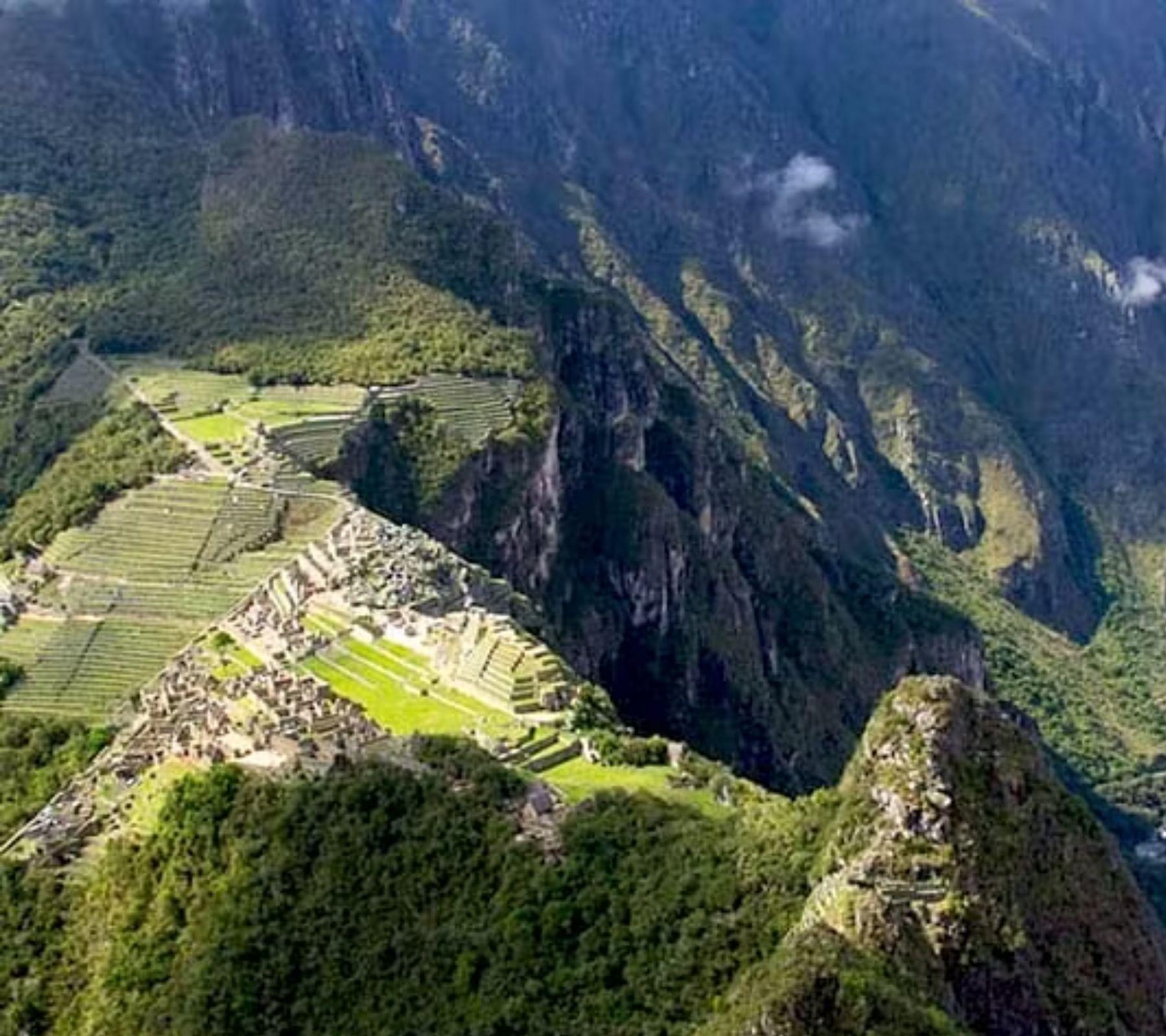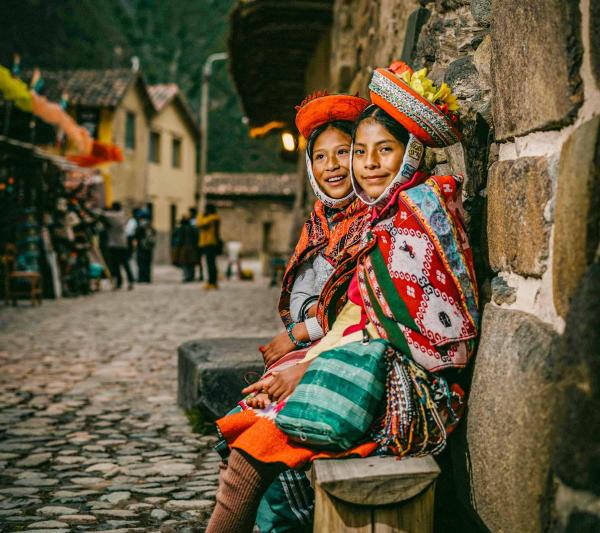Reaching the summit of Huayna Picchu is a must for any self-respecting citizen of the world. From its summit, one witnesses a landscape that takes one's breath away with its beauty and majesty. Many achieve the goal of climbing the ancient mountain after a arduous and intense journey that entails a demanding physical test and, above all, a great passion for adventure.
With a maximum height of 2,720 meters, Huayna Picchu Mountain appears imposing in the classic and famous postcard of the Machu Picchu citadel. The mountain is composed mostly of rocks into which the Incas carved their steps and paths to the summit, so there is only one path for both the ascent and descent.
According to historians, it is believed that it served as a lookout point to guard the sanctuary of Machu Picchu. By building this site, the Incas had a complete view of the valley and remained alert for any eventuality, such as a possible attack. From its summit, you can see a large number of terraces used for farming, as well as a wonderful view of the Urubamba River and the Temple of the Moon. If you're thinking about climbing the mountain, below we share some recommendations so you can enjoy this great experience safely.
What to expect on Huayna Picchu Mountain?
The route to Huayna Picchu begins with the entrance to Circuit 3 Machu Picchu, which allows observation of the lower part of the Inca Citadel and shares the first section with those heading to other sites such as the great cavern and Huchuy Picchu mountain. Shortly after, a clearly marked detour to the right leads to the start of the exclusive route to Huayna Picchu, an ancient observation and Inca ceremonial area.
From this point, the ascent becomes more demanding: you traverse nearly 750 carved stone steps, some of which have ropes installed to provide greater stability. Additionally, during the rainy months, these stones can become slippery, so caution is recommended.
Along the way, there are platforms where it is possible to take breaks, take photographs, and appreciate the surroundings. From there, you can contemplate part of the Inca architecture, the agricultural terrace systems, and how the city of Machu Picchu is left behind, enveloped by mountains and mist.
From the top, there are two descent routes:
- Short route - Consists of returning along the same path by which you ascended. Requires caution, especially in the steepest areas.
- Long route: towards the Temple of the Moon - In a section of the descent, there is a detour that leads to the Great Cavern or Temple of the Moon of Huayna Picchu. However, you can only enter if you also have the ticket to the Temple of the Moon or Great Cavern (Circuit 3C).
How dangerous are "The Stairs of Death"?
Despite the intimidating name, this section is less risky than it appears. No serious accidents have been recorded on this part of the path, although those who are afraid of heights might feel uncomfortable due to the steepness of the steps and the proximity to the edge. To increase safety, cables have been placed along some sections. Many hikers also opt to use their hands and feet to feel more stable. Furthermore, there are platforms that act as resting points and natural protection against possible imbalances.
Here are some facts:
- Maximum altitude: 2,693 meters / 8,835 feet
- Short trail hike distance: 2 km / 1.2 miles
- Short trail hike time: 2 hours (round trip) (round trip)
- Long trail hike distance: 5 km / 3.1 miles
- Long trail hike time: 3 hours (round trip)
- Difficulty level: Challenging
What is the best time of year to travel?
The ideal time to visit the mountain is between April and October. During these months, the Cusco region experiences a dry season characterized by sunny days with temperatures ranging from 20°C (68°F) during the day to 10°C (50°F) at night. However, if you plan to travel between November and March, it doesn't mean you'll have a bad time. During these dates, you can take advantage of fewer visitors and also enjoy a beautiful green landscape, often accompanied by a shimmering rainbow.
How to get an entrance ticket?
As this is one of the most impressive trekking routes in the world, demand is very high for an entrance ticket, so capacity is limited: a maximum of 400 people can enter, divided into two groups of 200. Reservations must be made in advance. Tickets can be purchased on the website "TuBoletoCultura" Available spots are also displayed there.
Groups and Entrance Times to Huayna Picchu
Access to Huayna Picchu is regulated in four daily groups. To visit it, you must purchase Circuit 3A: Huayna Picchu Mountain. Below are the entrance times:
- First group
- Entrance to Machu Picchu: from 6:00 a.m.
- Entrance to Huayna Picchu: between 7:00 and 8:00 a.m.
- Visitor limit: 50
- Second group
- Entrance to Machu Picchu: from 7:00 a.m.
- Entrance to Huayna Picchu: between 8:00 and 9:00 a.m.
- Visitor limit: 50
- Third group
- Entrance to Machu Picchu: from 8:00 a.m.
- Entrance to Huayna Picchu: between 9:00 and 10:00 a.m.
- Visitor limit: 50
- Fourth group
- Entrance to Machu Picchu: from 9:00 a.m.
- Entrance to Huayna Picchu: between 10:00 and 11:00 a.m.
- Visitor limit: 50
Get your physical preparation in advance before the trip
While climbing Huayna Picchu doesn't require special preparation, you do need to get your body in shape so you can enjoy the hike more and avoid any complications. If you exercise regularly, you won't experience discomfort due to lack of oxygen. On the other hand, if you think you're not in shape, you could do a series of cardiovascular exercises such as running or cycling in the weeks before your trip to improve your endurance. We also recommend acclimatizing for one or two days in Cusco before setting out on the trek to avoid altitude sickness.
What should you bring?
In any case, the climb to Huayna Picchu is demanding, so we recommend bringing light climbing clothing, trekking shoes, and a backpack with water, an energy snack, mountain gear such as sunglasses, insect repellent, sunscreen, and most importantly, a camera to capture the beautiful scenery you'll see from the summit.
The Best Tours to Machu Picchu
Visiting Machu Picchu is an unforgettable experience that combines spectacular landscapes, history, and culture. There are multiple ways to get to this wonder of the world, each with its own charm and level of adventure. To help you choose, here are some of the most popular tours to Machu Picchu:
- Machu Picchu Trip 2025
- Amazon and Machu Picchu tour
- 2025 Machu Picchu Tour
- Inca Trail and Rainbow Mountain tour
- Machu Picchu Day Tour
- Machu Picchu: Best travel for couples
- Combo Sacred Valley to Machu Picchu
- Cusco Sacred Valley Machu Picchu
- Cusco Trip: Cusco, Sacred Valley, Machu Picchu, Rainbow Mountain
- Inca Trail Peru: Lima, Inca Trail, Machu Picchu, Lake Titicaca, Colca Canyon









